-
Architects: Eskew Dumez Ripple, Spackman Mossop Michaels
-
Location: Chattanooga, Tennessee, United States
-
Collaboration: Hefferlin + Kronenberg Architects
-
Civil, structural, MEP engineers: March Adams & Associates
-
Project Year: 2018
To break down the barriers between Miller Park and the existing Miller Plaza across the street, SMM/EDR applied a “shared street” approach and reconfigured Martin Luther King Boulevard, connecting the two public spaces as one unified civic space. This involved reducing traffic lanes, removing traditional curbs to bring the road and sidewalk to the same level, and planting a flush median strip with native trees to slow down traffic and encourage more pedestrian activity across the park.
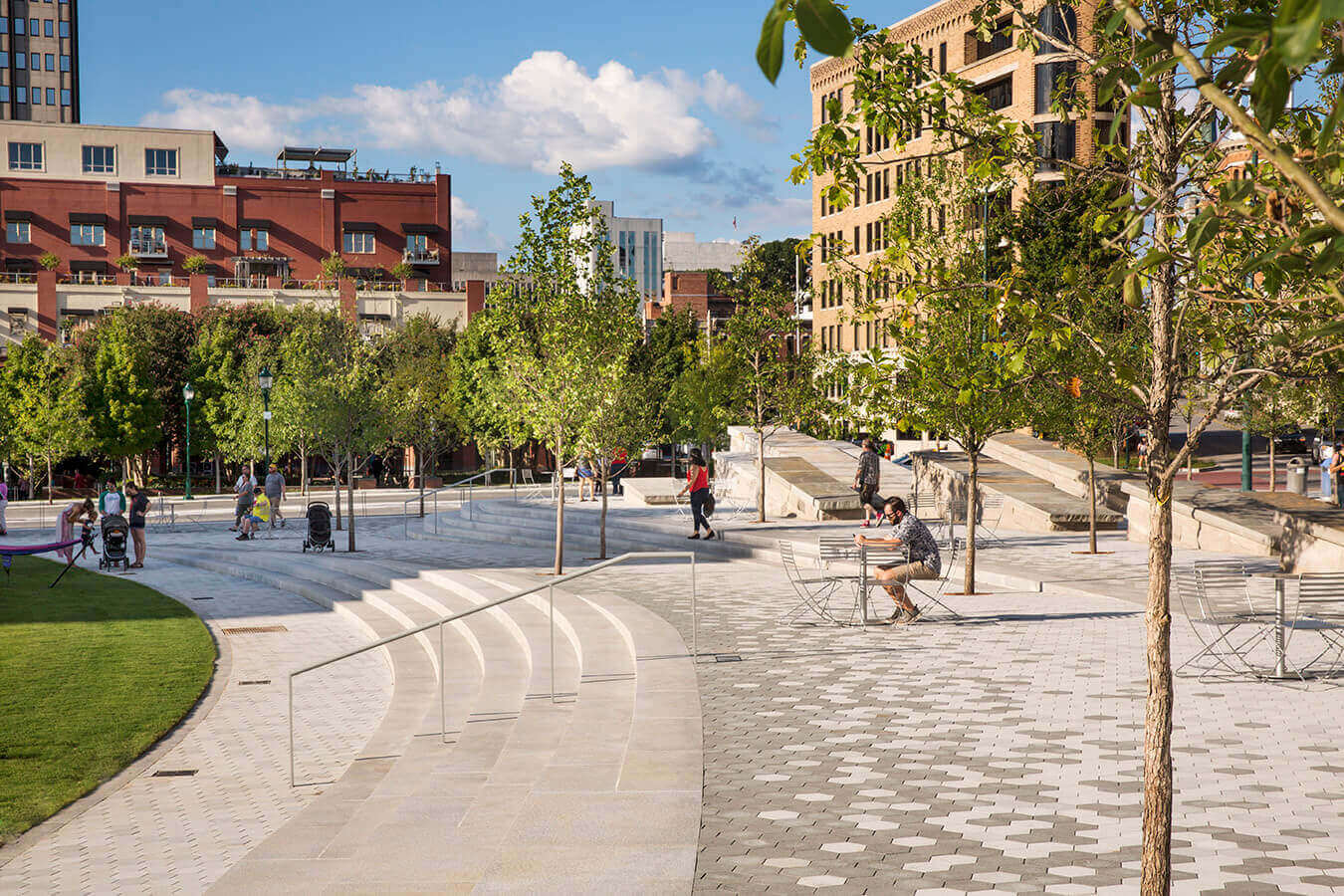
A paving pattern marks the transition between the park and the roadway, with this design continuing along the monumental stairs intended for social gatherings. These steps play a leading role in the park's design and easily transform into seating for everyday use and special events.
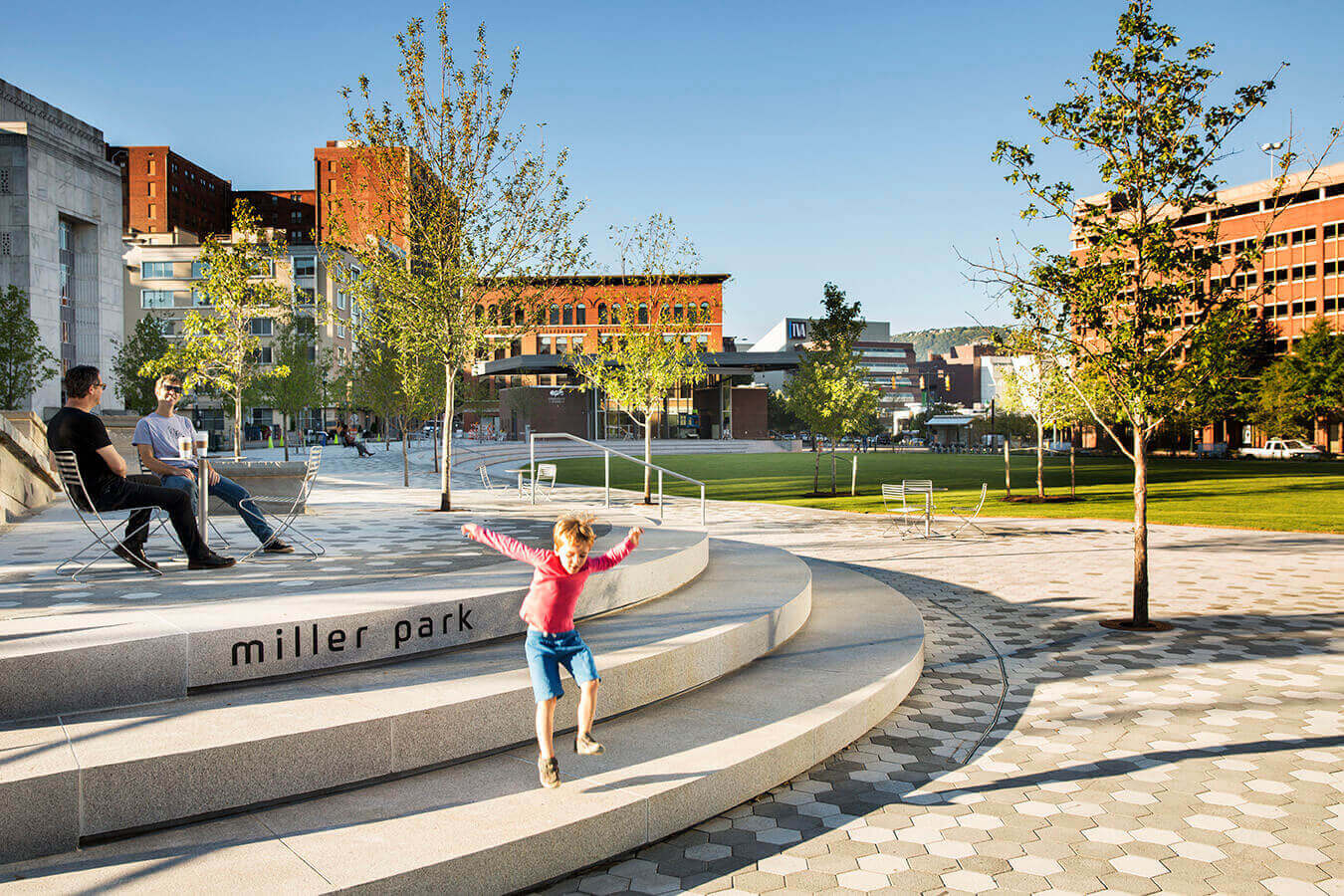
Miller Park provides immense ecological benefits on this small site in a dense urban area. All of SMM’s projects are designed to consider the social, financial, and environmental impact on the immediate community. Sustainable and long-term solutions such as stormwater management and strategically positioned soil cells make up the green infrastructure and play a key role in the subterranean design of Miller Park. More than 75 new trees, all native to the region, were planted. An expansive structural soil cell system was installed to allow the tree roots to grow large and wide without disrupting the pavement, and cleaning pollution from rainwater. These soil cells provide each tree with a large volume of soil, creating an ideal environment for a long-term urban forest of grand canopy trees. In addition to nurturing the native trees and plants, the soil cells provide excellent stormwater management that reduces the amount of water that enters the combined sewer overflow systems.
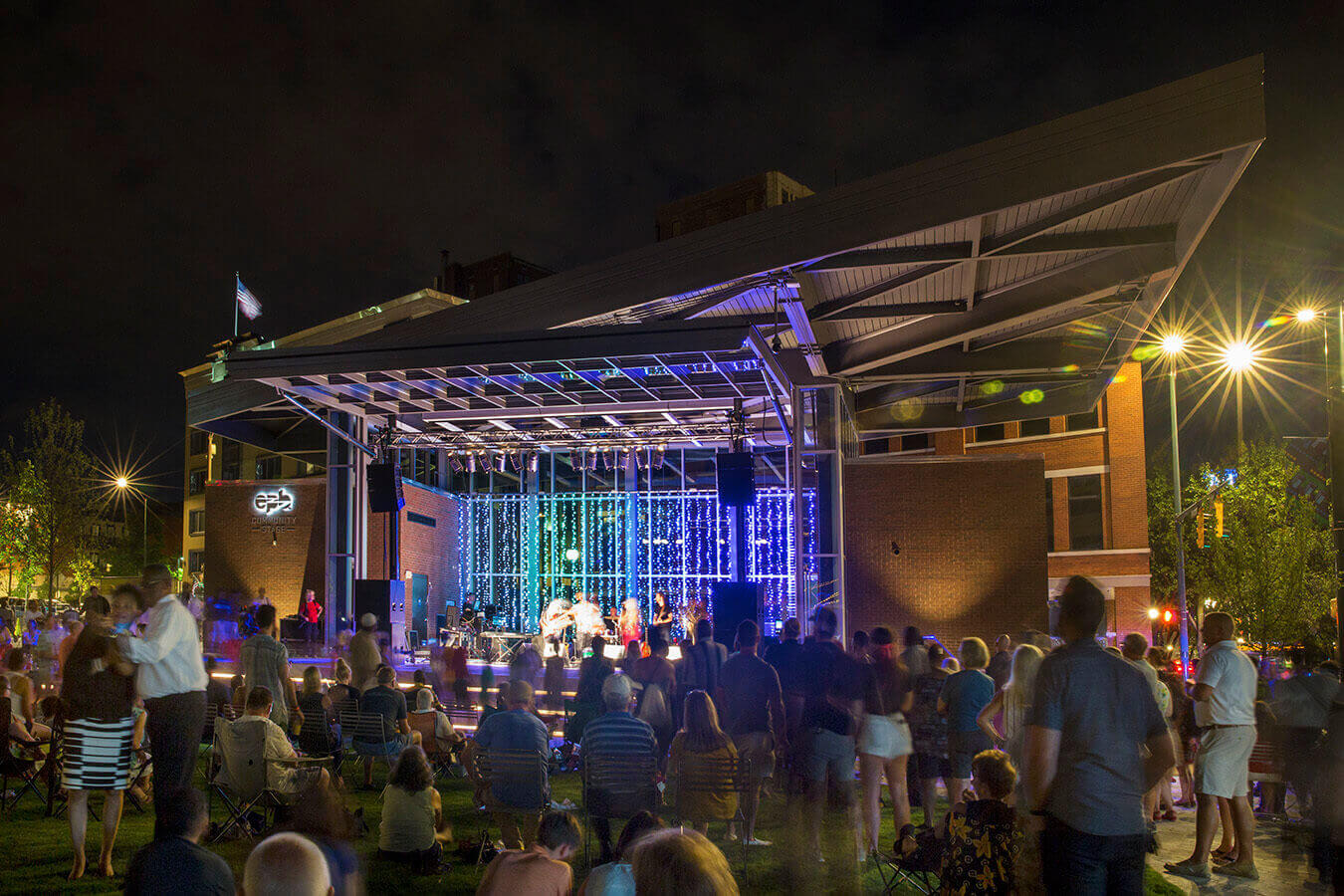
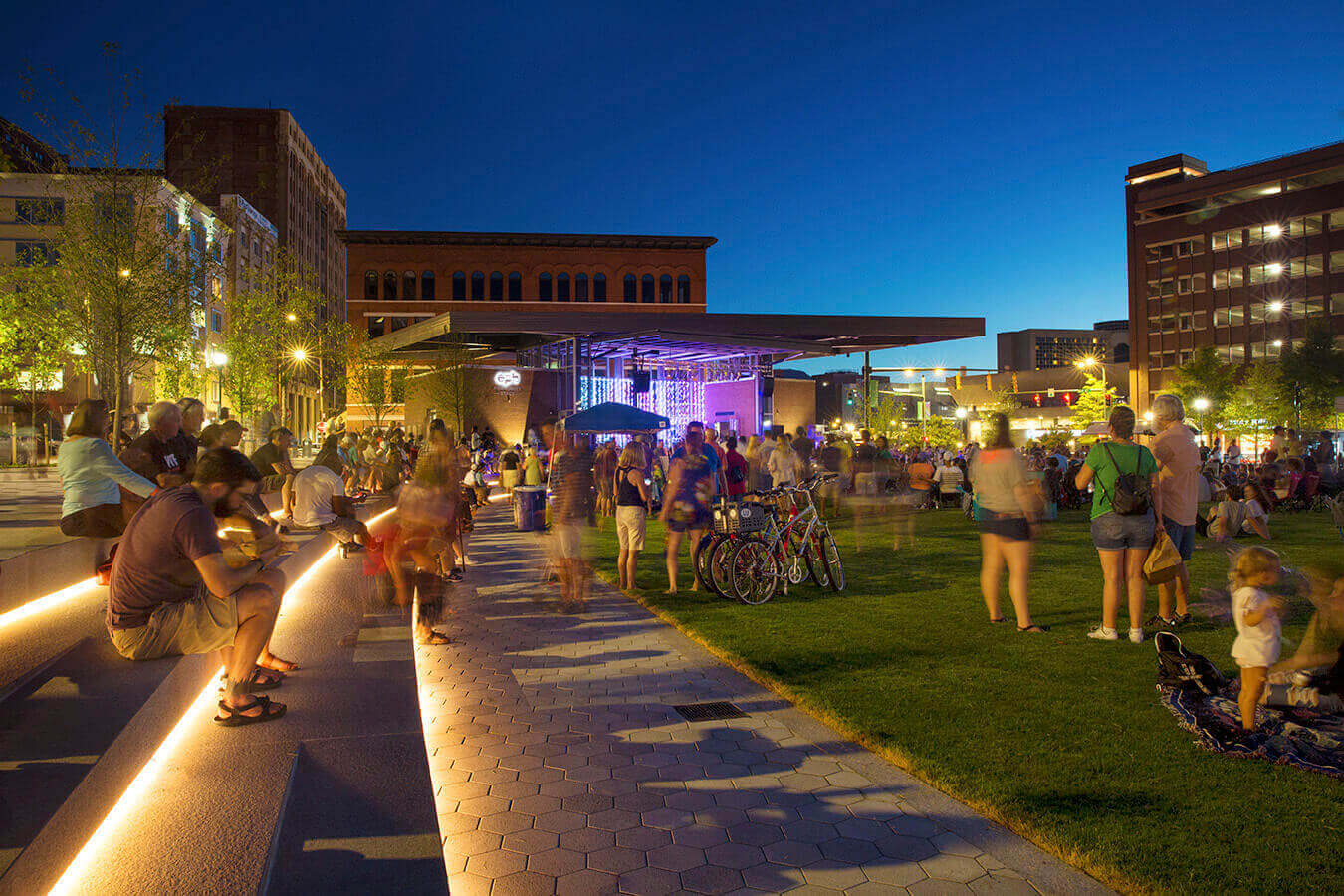
While serving as a green oasis in the city center, the park is also designed to accommodate cultural events and technologically-advanced productions. Free high-speed wifi is available throughout the park, and an underground system of internet cables and electricity can support high-tech digital art installations, performances, and outdoor movie screenings. The state-of-the-art Pavilion designed by EDR, along with the open lawn, serve as an ideal space for events. A digital projector on the Pavilion allows for movie screenings and live performances.
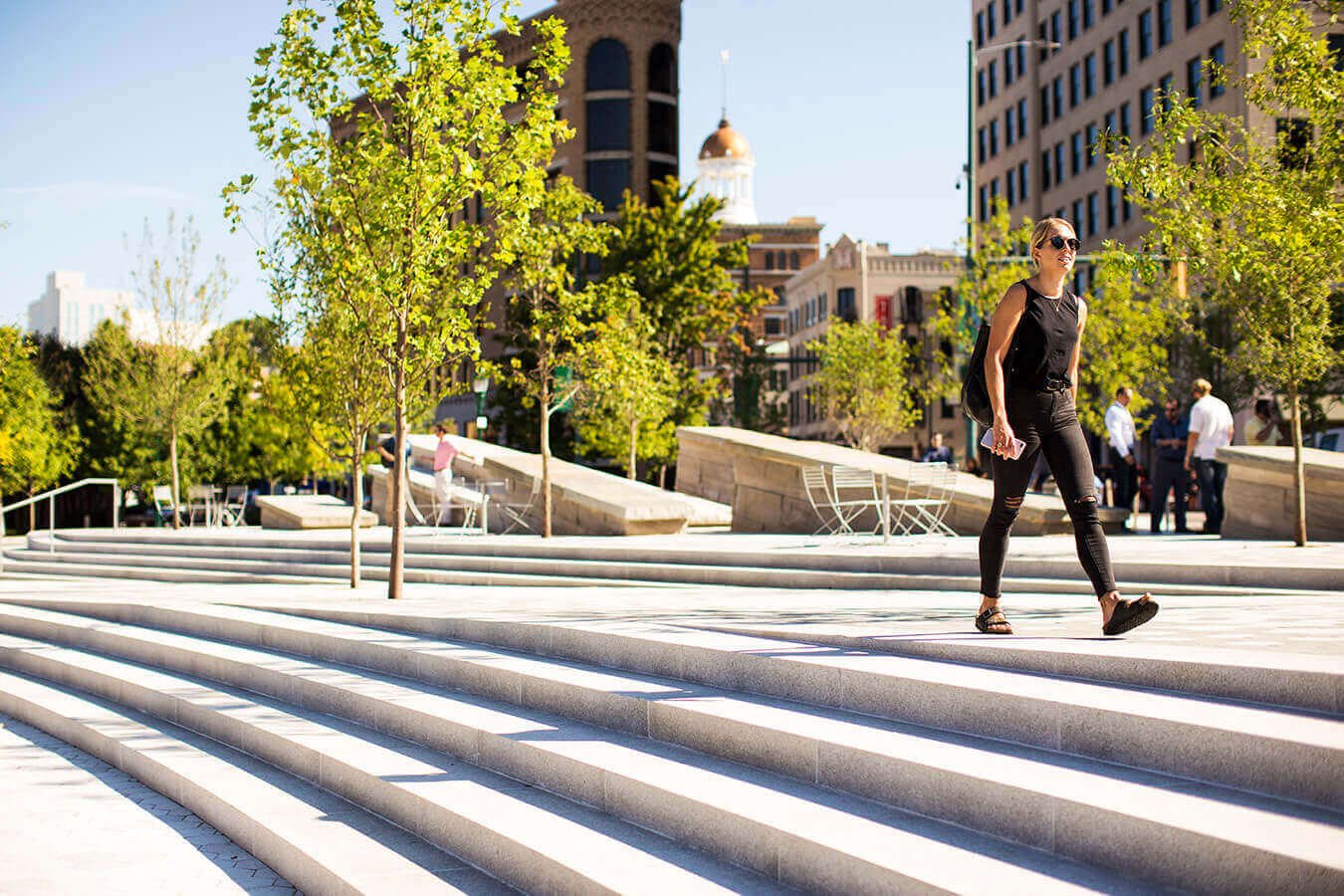
SMM/EDR took steps to involve the community in the design process. Over the course of six months, they held public meetings throughout the city, set up an online platform for collecting the community’s input, and conducted in-person surveys in the existing park and surroundings to bring a variety of voices to the table. This intensive community engagement helped inform the open, flexible design that characterizes the new Miller Park.
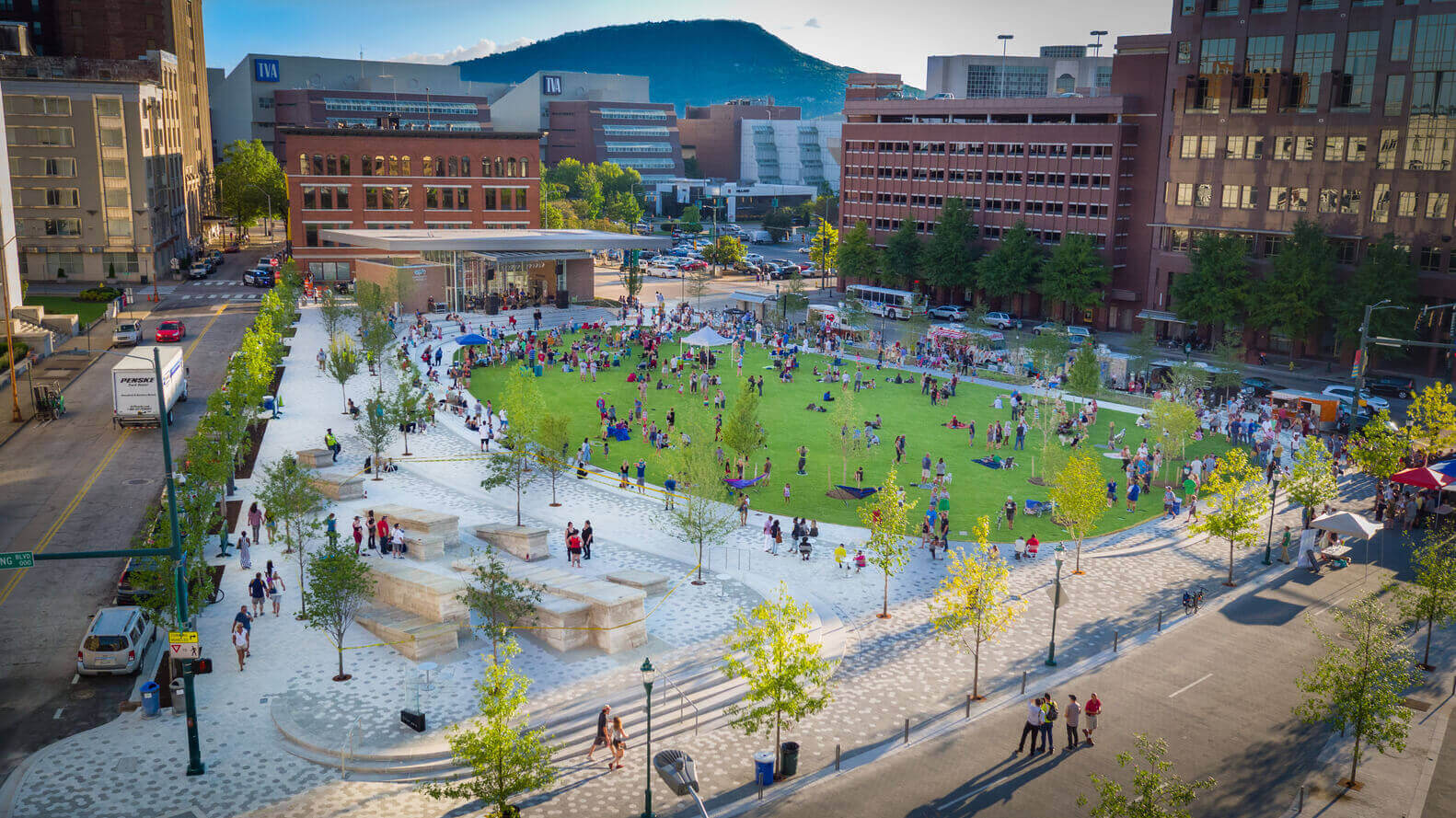
Reference: "Miller Park In Downtown Chattanooga / Spackman Mossop Michaels + Eskew Dumez Ripple" 19 Oct 2018. ArchDaily. <https://www.archdaily.com/904078/miller-park-in-downtown-chattanooga-spackman-mossop-michaels-plus-eskew-dumez-ripple> ISSN 0719-8884